Edwin Lester Linden Arnold: ~ Born: 1875 - London, England
~ Died: Mar. 1, 1935 - London, England \
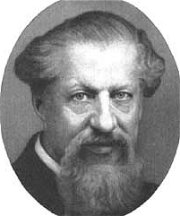 Science
fiction historian Sam Moskowitz, in his introduction to the Hyperion
Press edition of Journey to Mars, points to several elements that recur
in Burroughs’ work. Both heroes are officers, John Carter, a captain in
the U.S. Army, and Lieutenant Frederick Hamilton of the U.S. Navy. On both
versions of Mars there are ancient, declining civilizations with super-technology,
however the weapon of choice remains the sword. Both heroes have
greater strength than the native Martians, given the lower gravitation
(Burroughs) or the higher oxygen content of the air (Pope). Both men fall
for their respective beautiful princess, Dejah Thoris (Burroughs) and Suhlamia
(Pope). Both young women are courageous and come from a race of people
who live for an indefinite time. The Martians in Pope’s book ride around
on gigantic birds instead of the Thoths encountered on Burroughs’ Barsoom.
Finally, both books have a cliffhanger ending, Burroughs’ world about to
succumb to asphyxiation, Pope’s royal city to be destroyed by a meteorite
storm. While there are differences in that Carter is mysteriously transported
to Mars while Hamilton reaches it aboard a Martian spacecraft visiting
a Martian base at the Earth’s North Pole, and that Pope’s story is much
more slowly paced than Burroughs’, the similarities exist. Pope published
another SF novel, A Journey to Venus (F. Tennyson Neely, 1895), but this
has never been reprinted and is not a sequel to A Journey to Mars. Very
little is known of Pope except that he was a medical doctor practicing
in Washington, D.C., who also wrote half a dozen juvenile adventure novels,
some non-fiction, and some religious pamphlets. Science
fiction historian Sam Moskowitz, in his introduction to the Hyperion
Press edition of Journey to Mars, points to several elements that recur
in Burroughs’ work. Both heroes are officers, John Carter, a captain in
the U.S. Army, and Lieutenant Frederick Hamilton of the U.S. Navy. On both
versions of Mars there are ancient, declining civilizations with super-technology,
however the weapon of choice remains the sword. Both heroes have
greater strength than the native Martians, given the lower gravitation
(Burroughs) or the higher oxygen content of the air (Pope). Both men fall
for their respective beautiful princess, Dejah Thoris (Burroughs) and Suhlamia
(Pope). Both young women are courageous and come from a race of people
who live for an indefinite time. The Martians in Pope’s book ride around
on gigantic birds instead of the Thoths encountered on Burroughs’ Barsoom.
Finally, both books have a cliffhanger ending, Burroughs’ world about to
succumb to asphyxiation, Pope’s royal city to be destroyed by a meteorite
storm. While there are differences in that Carter is mysteriously transported
to Mars while Hamilton reaches it aboard a Martian spacecraft visiting
a Martian base at the Earth’s North Pole, and that Pope’s story is much
more slowly paced than Burroughs’, the similarities exist. Pope published
another SF novel, A Journey to Venus (F. Tennyson Neely, 1895), but this
has never been reprinted and is not a sequel to A Journey to Mars. Very
little is known of Pope except that he was a medical doctor practicing
in Washington, D.C., who also wrote half a dozen juvenile adventure novels,
some non-fiction, and some religious pamphlets.
Lieut. Gullivar of Mars is held by most accounts to be
the most likely influence on ERB’s Under the Moons of Mars , except
that while widely available in England, it was not published in the United
States until the 1965 Ace (F-296) edition, with cover art by Frank Frazetta.
Edwin Lester Arnold was the son of the famous Sir Edwin Arnold, Orientalist,
journalist (chief editor of the London Daily Telegraph), and author of
the long narrative poem “The Light of Asia” (1879). E.L. Arnold (1857-1935)
was born in Swanscombe, Kent, England, spent his childhood in India, and
returned to England to study agriculture and ornithology. After much world
travelling with his father he settled down to a job as a journalist in
1883. In 1890 his first novel, Phra the Phoenician, appeared in the prestigious
Illustrated London News, in 26 parts each with a full-page illustration
(it pays to have a daddy in high places). The first edition (Harper's 1890)
had no illustrations since it was likely a pirated edition, but the first
British edition (Chatto and Windus, 1891) did include about half the illustrations.
The latter edition was reprinted in the Newcastle Forgotten Fantasy Library,
Volume XI (1977).
Phra is a novel of reincarnation in which the title character,
a Phoenician merchant, sails to Britain. There he meets a beautiful barbarian
druid princess, Blodwen. When Julius Caesar invades Britain, he dies after
having been betrayed by a jealous druid. He wakes up 400 years later, not
having aged, and, courtesy of Blodwen, with his entire past history tattooed
on his body. After more swashbuckling adventures, he dies again to reawake
another 400 years later, and so on. Finally, in Elizabethan times, hoping
he will truly die and rejoin Blodwen in Eternity, he writes his memoirs.
The story was very popular and even reprinted by popular
demand as late as 1945 (Famous Fantastic Mysteries, September 1945). Phra
also spawned a number of imitations, the best known of which is George
Griffith’s Valdar the Oft-Born: A Saga of Seven Ages (Pearson’s Weekly,
1910; FAX Collector’s Editions, 1972). Another excellent variation on the
theme is Arthur D. Howden-Smith’s Grey Maiden (magazine, Adventure, 1926;
book, Longmans, 1929, abridged version, Centaur, 1974), about an imperishable
sword which is discovered and used at intervals through history. Arnold
himself reused the theme in the novelette Rutherford the Twice-Born
(The Idler, 1892; in book form, The Story of Ulla, 1895), and in
the somewhat tongue-in-cheek Lepidus the Centurion: A Roman of Today (1901;
reprinted Arno Press). Unfortunately the latter novel’s comedic style didn’t
go over well with the reading public and Lepidus was a bomb.
It was not until 1905 that Arnold published his great
Martian novel. When it received only a lukewarm welcome, he stopped writing
altogether. He died 30 years later, largely forgotten. The resemblances
with Burroughs’ Under the Moons of Mars are remarkable. Both Carter
and Jones reach Mars by unscientific means, the former by astral projection,
the latter on a magic carpet! Both versions of Mars have very similar
civilizations, down to the absence of old people and small children. Jones’
princess is Heru, and he meets the Hither People, a group remarkably similar
to Burroughs’ Heliumites. John Carter’s rescue of Dejah is duplicated,
as is his journey down the river Iss (in The Gods of Mars ). The
return to Earth under dire circumstances at the end of the story is also
common to both books. Richard A. Lupoff, in his introduction to the first
American edition of the novel (Gulliver of Mars), having outlined
these similarities, points out that while John Carter is a great, fearless,
swashbuckling hero, Gullivar Jones is pretty much a wimp in comparison.
Lupoff suggests that Carter was perhaps patterned on Phra, as these two
characters are very much alike. ~ George Dodds
Wikipedia
Entry
|

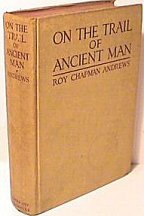
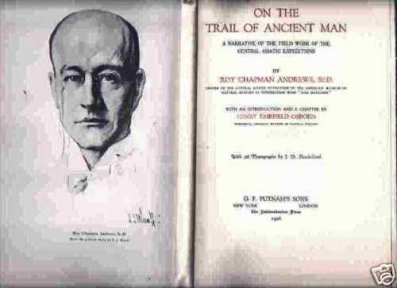
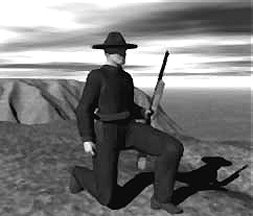
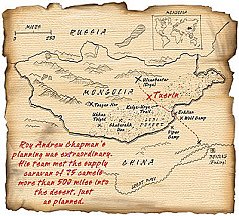
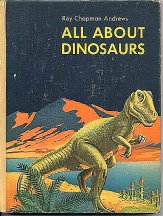

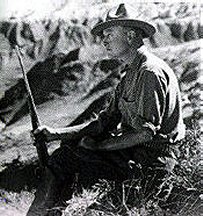
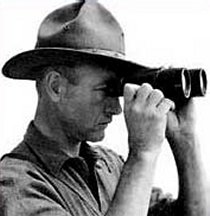
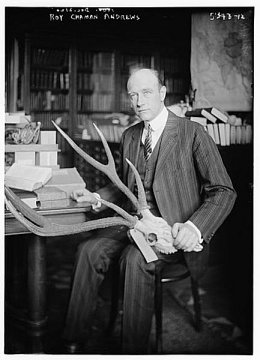
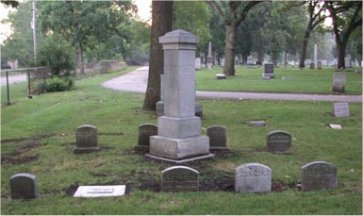
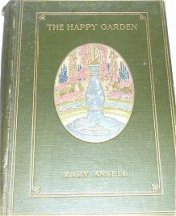
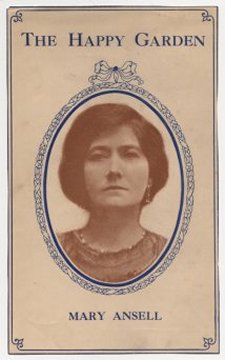
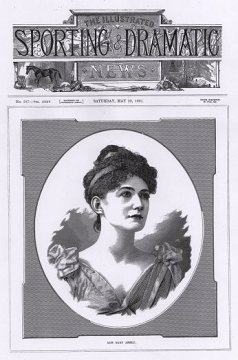
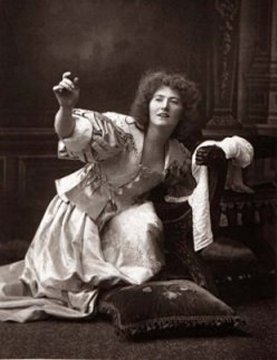
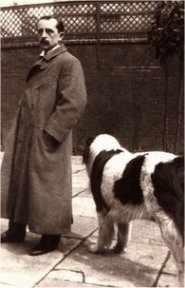
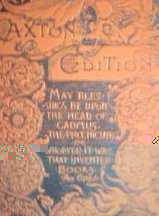 GREY
DOLPHIN ~ Richard Harris Barham
GREY
DOLPHIN ~ Richard Harris Barham

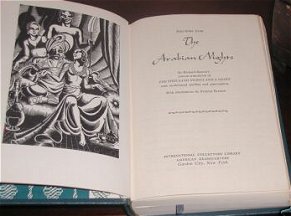
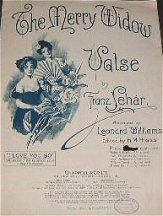
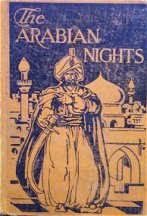
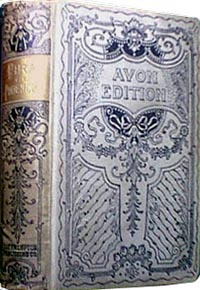
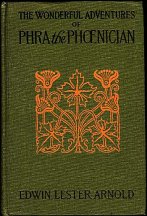
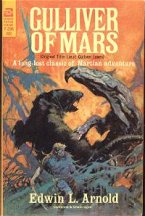
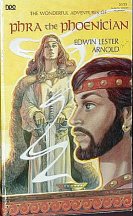
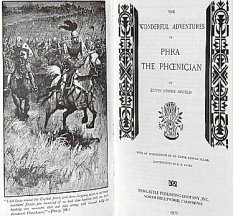
 Science
fiction historian Sam Moskowitz, in his introduction to the Hyperion
Press edition of Journey to Mars, points to several elements that recur
in Burroughs’ work. Both heroes are officers, John Carter, a captain in
the U.S. Army, and Lieutenant Frederick Hamilton of the U.S. Navy. On both
versions of Mars there are ancient, declining civilizations with super-technology,
however the weapon of choice remains the sword. Both heroes have
greater strength than the native Martians, given the lower gravitation
(Burroughs) or the higher oxygen content of the air (Pope). Both men fall
for their respective beautiful princess, Dejah Thoris (Burroughs) and Suhlamia
(Pope). Both young women are courageous and come from a race of people
who live for an indefinite time. The Martians in Pope’s book ride around
on gigantic birds instead of the Thoths encountered on Burroughs’ Barsoom.
Finally, both books have a cliffhanger ending, Burroughs’ world about to
succumb to asphyxiation, Pope’s royal city to be destroyed by a meteorite
storm. While there are differences in that Carter is mysteriously transported
to Mars while Hamilton reaches it aboard a Martian spacecraft visiting
a Martian base at the Earth’s North Pole, and that Pope’s story is much
more slowly paced than Burroughs’, the similarities exist. Pope published
another SF novel, A Journey to Venus (F. Tennyson Neely, 1895), but this
has never been reprinted and is not a sequel to A Journey to Mars. Very
little is known of Pope except that he was a medical doctor practicing
in Washington, D.C., who also wrote half a dozen juvenile adventure novels,
some non-fiction, and some religious pamphlets.
Science
fiction historian Sam Moskowitz, in his introduction to the Hyperion
Press edition of Journey to Mars, points to several elements that recur
in Burroughs’ work. Both heroes are officers, John Carter, a captain in
the U.S. Army, and Lieutenant Frederick Hamilton of the U.S. Navy. On both
versions of Mars there are ancient, declining civilizations with super-technology,
however the weapon of choice remains the sword. Both heroes have
greater strength than the native Martians, given the lower gravitation
(Burroughs) or the higher oxygen content of the air (Pope). Both men fall
for their respective beautiful princess, Dejah Thoris (Burroughs) and Suhlamia
(Pope). Both young women are courageous and come from a race of people
who live for an indefinite time. The Martians in Pope’s book ride around
on gigantic birds instead of the Thoths encountered on Burroughs’ Barsoom.
Finally, both books have a cliffhanger ending, Burroughs’ world about to
succumb to asphyxiation, Pope’s royal city to be destroyed by a meteorite
storm. While there are differences in that Carter is mysteriously transported
to Mars while Hamilton reaches it aboard a Martian spacecraft visiting
a Martian base at the Earth’s North Pole, and that Pope’s story is much
more slowly paced than Burroughs’, the similarities exist. Pope published
another SF novel, A Journey to Venus (F. Tennyson Neely, 1895), but this
has never been reprinted and is not a sequel to A Journey to Mars. Very
little is known of Pope except that he was a medical doctor practicing
in Washington, D.C., who also wrote half a dozen juvenile adventure novels,
some non-fiction, and some religious pamphlets.
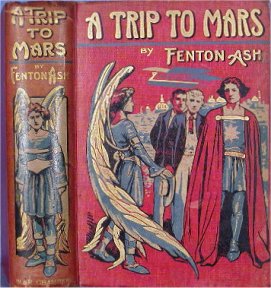 Two archetypical
young Edwardians 'stalwart, well-grown, clean limbed British youths' visit
the planet Mars and encounter its winged inhabitants. Inspired by Percival
Lowell's 1908 scientific book Mars as the Abode of Life. Edwardian
juvenile, interplanetary novel.
Two archetypical
young Edwardians 'stalwart, well-grown, clean limbed British youths' visit
the planet Mars and encounter its winged inhabitants. Inspired by Percival
Lowell's 1908 scientific book Mars as the Abode of Life. Edwardian
juvenile, interplanetary novel.
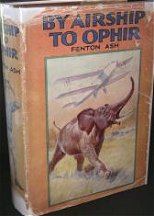 A Son of
the Stars ~ 1909 ~ with extensive bio./biblio notes by experts
Sam Moskowitz and Darrell C. Richardson serialized in Caz' The Fantasy
Collector Nos. 201-216
A Son of
the Stars ~ 1909 ~ with extensive bio./biblio notes by experts
Sam Moskowitz and Darrell C. Richardson serialized in Caz' The Fantasy
Collector Nos. 201-216
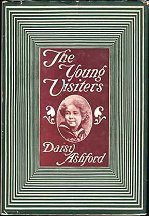
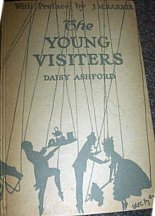
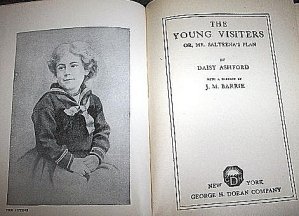
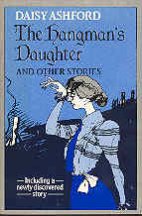
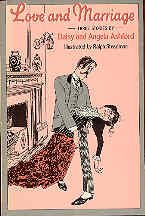
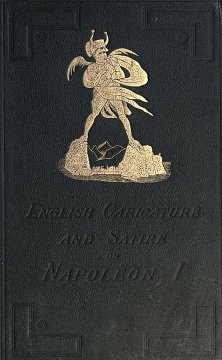
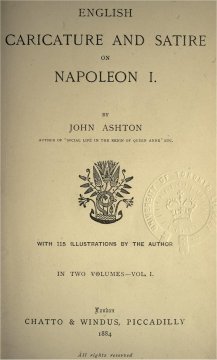
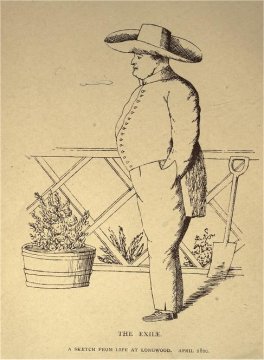
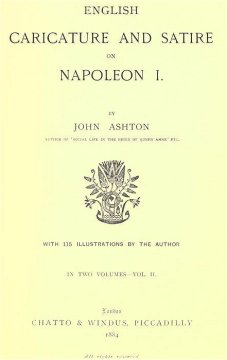
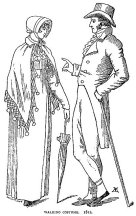
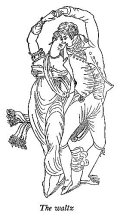
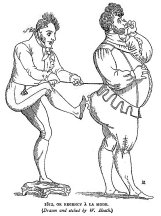
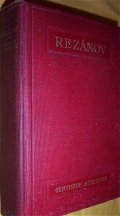
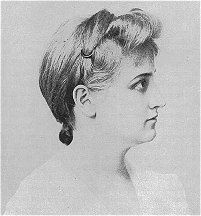
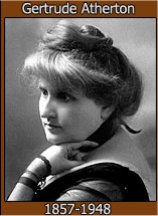
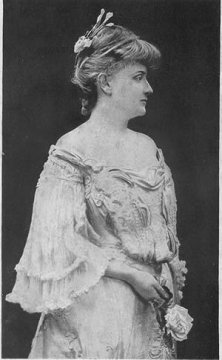 Gertrude Franklin
Atherton (1857-1948), American biographer, historian and author of
the best-seller Black Oxen (1923). She also wrote under the pen names Asmodeus
and Frank Lin. She wrote many novels, short stories, essays, and articles
for magazines and newspapers on such contemporary issues as feminism, politics
and war. She is oft said to have been difficult and strong-willed herself,
writing before her time, but her scope and range of vision in her stories
of remarkable and independent woman entering the 20th century are well-respected
and still in print.
Gertrude Franklin
Atherton (1857-1948), American biographer, historian and author of
the best-seller Black Oxen (1923). She also wrote under the pen names Asmodeus
and Frank Lin. She wrote many novels, short stories, essays, and articles
for magazines and newspapers on such contemporary issues as feminism, politics
and war. She is oft said to have been difficult and strong-willed herself,
writing before her time, but her scope and range of vision in her stories
of remarkable and independent woman entering the 20th century are well-respected
and still in print.








